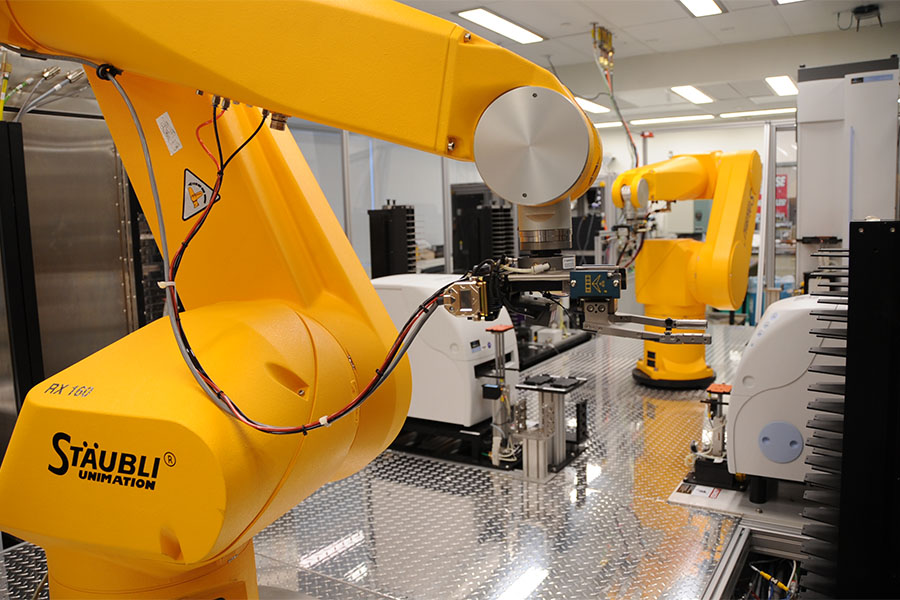Tox21 Collaborators Release New Strategic Plan for Chemical Testing

Using NCATS’ state-of-the-art robotic screening system, Tox21 scientists have produced more than 120 million data points on approximately 8,500 chemicals since 2008. (NCATS)
March 29, 2018
Ten years ago, a group of federal partners formed a unique collaboration — Toxicology in the 21st Century (Tox21) — to develop faster, more efficient approaches to predict how exposure to chemicals may affect human health. On March 8, 2018, Tox21 program partners from NCATS, the National Toxicology Program at the National Institute of Environmental Health Sciences, the Environmental Protection Agency, and the Food and Drug Administration published a new strategic and operational plan to broaden the scope of their research activities to address new challenges.
Traditional preclinical approaches to testing drugs, environmental chemicals and other substances involve animal models or other living organisms. These methods are slow, costly and often unable to predict toxic health effects observed in clinical trials. In contrast, in vitro approaches involve testing substances outside living systems, making it possible to increase the volume and speed of testing through automated, “high-throughput” screening.
Using NCATS’ state-of-the-art robotic screening system, Tox21 scientists have produced more than 120 million data points on approximately 8,500 chemicals since 2008. These data help researchers understand the potential effects of exposure to a substance based on how it interacts with biological molecules during screening.
All Tox21 data are publicly released for broad use in research and regulatory decisions, and screening results have been published in over 200 articles in more than 55 scientific journals. Many of the tested chemicals had no prior information available about potential toxic effects.
Challenges remain in improving the reliability, efficiency and predictive capability of toxicity testing using in vitro high-throughput screening. To address these obstacles, the Tox21 collaborators have published a plan in the journal ALTEX to expand the scope of their research, including five new areas of focus:
- Develop alternative test systems that can predict human response to chemicals and capture more potential toxic effects, including variability among different groups of people
- Address key technical limitations of current in vitro test systems, including technological and biological barriers and obstacles to translating results
- Collect, organize and analyze available data from toxicity studies in living systems, which can help inform analysis of in vitro testing results
- Strengthen scientific confidence in the data produced by in vitro test systems, including developing an evaluation framework for performance standards
- Develop new in vitro methods and models for predicting how substances will move through and be processed by the human body, thus improving estimates of impact and effectiveness
Tox21 collaborators are launching new cross-partner research projects to address these five focus areas. The three-year projects each have support from a minimum of two Tox21 partners and will be reviewed annually by Tox21 leadership. Learn more about the projects.
“Tox21 is truly a collaborative initiative, with each partner bringing unique expertise and resources that are crucial to advancing toxicity testing methods,” said Anton Simeonov, Ph.D., NCATS scientific director. “The new strategic plan and expanded research areas will ensure Tox21 efforts continue to benefit the entire toxicology community and help protect individuals from potential harmful effects of exposure to chemicals.”


